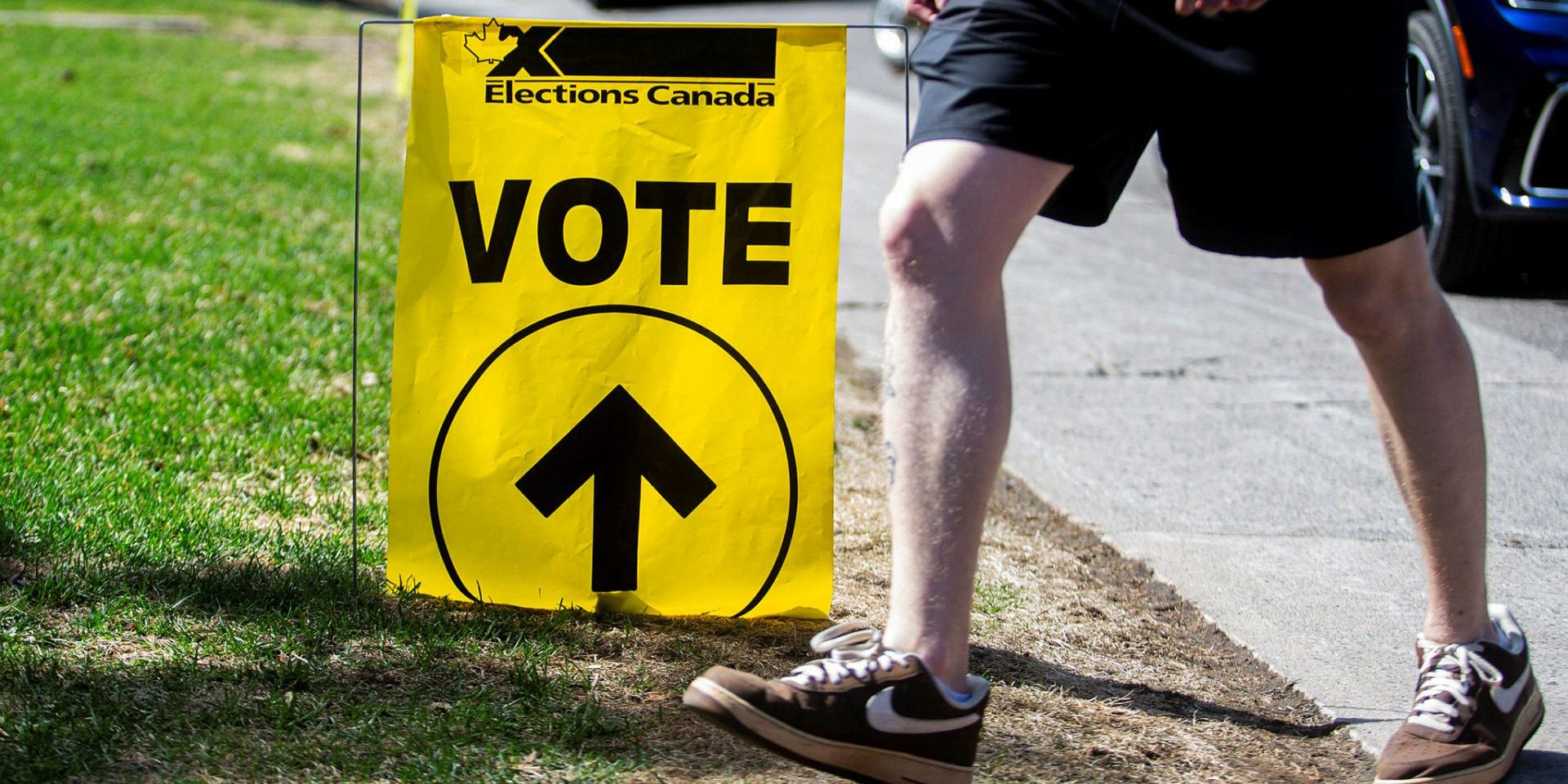U.S. tariffs on pharmaceuticals could complicate an already complex supply chain

Canada’s level of pharmaceutical drug exports pales in comparison to other products on the United States’ list of tariff targets, but experts say the impacts would still be significant because of the industry’s integrated and complex global supply chain.
Pharmaceutical products made up two per cent of total Canadian exports in 2024, with a value of $11.3-billion, according to data from Trading Economics. The two most popular products, which make up more than a third of total exports are oil and related products (valued at $145.07-billion) and vehicles ($57.98-billion).
But calculating the value of where finished pharmaceuticals come from doesn’t tell the full story.
As an example, Jason Field, president and CEO of Life Sciences Ontario, told The Hill Times the story of a biotechnology company based in British Columbia. The company’s leaders told Field that they use an active pharmaceutical ingredient (the component of a drug that provides the therapeutic benefit) produced in Ontario. That ingredient is then sent to Florida for the formulation of the drug. From there, the drug is sent to multiple sites in North America for clinical trials.
“So, what this company said was, if these tariffs came into play, they would have to start considering, are they going to manufacture that [active pharmaceutical ingredient] in Canada anymore, or would they just do it in the U.S.? And if they’re doing [that] manufacturing in the U.S., is it going to be worth it if they’re going to be tariffed on it every time it crosses the border? Are they even going to run clinical trials in Canada anymore?” Field told The Hill Times.

Potential consequences of those types of decisions include a loss of manufacturing jobs, but also the possibility there will be fewer available clinical trials in Canada, which is how patients receive early access to new treatments, according to Field.
Mina Tadrous, an associate professor at the University of Toronto’s Leslie Dan Faculty of Pharmacy, said he read a study where a clinician tracked a pharmaceutical from the beginning to the end of its manufacturing, and found the drug travelled through nine countries.
“Now, you multiply that by thousands of drugs, you have an opportunity now that something is going to go wrong. … As you add more complexity or you try to manoeuvre, you increase the probability that something is going to go wrong,” Tadrous told The Hill Times.
He added that the worst drug shortage he ever saw was not due to war or a hurricane but the merging of two pharmaceutical companies that decided to make changes to their manufacturing process to reduce repetition. “That caused a slew of issues,” Tadrous said.
U.S. tariffs have thus far hit commodities including steel and aluminum, which have been in place since March 2025, and will soon be applicable to copper on Aug. 1. Pharmaceuticals have been on U.S. President Donald Trump’s tariff wish list and The Guardian reported on July 16 that Trump has said he may announce these particular tariffs at the end of this month.
Laura Dawson, executive director of the Future Borders Coalition, said that Canada is a “bit player in a larger drama” surrounding the application of tariffs on pharmaceutical products.
“My sense on the tariffs is it really has very little to do with Canadian production and much more about creating pressure to relocate pharmaceutical manufacturing in the United States,” Dawson told The Hill Times.
That pressure seems to be working. Reuters reported on July 22 that Roche, Eli Lilly & Co, Johnson & Johnson, Novartis, and Sanofi have all announced new investment plans for U.S.-based operations this year. The most recent company to do this is AstraZeneca, which announced on July 22 that it will spend USD$50-billion to expand its manufacturing and research capabilities in the U.S. by 2030.

Field said that tariffs will “absolutely” have an impact on recent Canadian initiatives to bolster domestic life sciences manufacturing in the wake of the COVID-19 pandemic.
The federal government, Ontario, and British Columbia have all come out with life sciences strategies since 2021 in response to the pandemic, when Canada found itself in a global competition with other countries for vaccines and other therapeutics to manage COVID-19.
“A 40-year decline in the sector left Canada without the large-scale and flexible biomanufacturing capacity necessary to quickly produce a COVID-19 vaccine when the pandemic hit,” reads a press release about the launch of the federal life sciences strategy on July 28, 2021.
The release states that the federal strategy has two goals: “to grow a strong, competitive domestic life sciences sector, with cutting-edge biomanufacturing capabilities, while creating good jobs for Canadians, and to make sure Canada is prepared for pandemics and other health emergencies in the future.”
Field said that the pandemic “created a stronger global competition for investments in life sciences. So if you start layering tariffs onto that context, it’s going to start to skew these things and … it’s a consideration in that overarching competitiveness.”
He said that governments in Canada have been working on being competitive for life sciences investments by streamlining regulatory approvals and reducing the delays in public insurance reimbursements and making medicines available to patients.
“All of that is great, but it may become a moot point if tariffs create a steep disincentive, based on pricing, so that would be my main concern,” Field added.
As for how tariffs could impact the prices of medicines, Lawson said she has heard that the manufacturers of patented medicines might be able to “observe the tariffs for a relatively short period of time but for the generic industry—which has very, very narrow margins—any sort of tariffs, would be very hard on that sector.”
A research letter co-written by Tadrous indicates that Canada’s generics industry would be the hardest hit from American tariffs. Published on March 31, 2025, in the Journal of the American Medical Association, the letter states that of the 22,082 drug products sold between the fourth quarter of 2022 and the third quarter of 2023, only 411 (1.9 per cent) were manufactured in Canada. But of those 411 products, 323 (79 per cent) were generic medicines.
Still, Tadrous told The Hill Times that the figure of 1.9 per cent is probably a low estimate since the research focused on the end product coming from Canada, and not the possibility that one or more ingredients were developed in Canada.
Another issue to consider is that Canada is the sole supplier of 52 of the 3,099 unique drugs exported to the U.S.
What Canada’s next steps should be
Tadrous and Field argued that counter-tariffs should not be a part of any Canadian response if Trump goes ahead with his plan. They both noted that some pharmaceuticals were included in an early list from the federal government of proposed tariff targets, but that the Liberals never included those products on their final list.
Health innovations “should be kept off limits, and [the government should use] whatever diplomatic means … that they can use to get that message across and ensure that Canadian patients are protected from tariffs on any medical innovation whether it’s pharmaceutical or medical devices,” Field said.
Tadrous said he would like to see more strategic support for the domestic generic pharmaceutical industry—which has a “really rich history” in Canada but hasn’t seen as much support in recent years—as a way to protect the supply chain.

“I don’t want you to just say, ‘I’m going to dump money into the generic market’ or give them tax breaks. I want you to say, ‘There’s certain drugs I care about. Can you help me protect our supply chain and produce domestic production in this space?’” Tadrous said.
There are also opportunities to export generic drugs to other markets outside of the U.S., according to Tadrous.
Dawson said that Canada could benefit from the fact that the U.S. is looking to reduce its dependency on other countries, including China, for its pharmaceuticals.
“I think that’s a productive line of action for Canada to reach back to the United States and say, ‘How can we do this together? What are areas where we can collaborate to create more synergies?’” she said.
Dawson added there is also an opportunity for the patented medicine industry in Canada to work with its partners in the U.S. to educate American lawmakers on the synergies in this industry between the two countries and how that contributes to jobs and investment in the U.S.
A statement on July 22 from Innovative Medicines Canada, which represents the domestic patented medicines industry, said that it is “closely monitoring the threats of tariffs from the Trump administration and their potential implications for the Canadian pharmaceutical industry and life sciences ecosystem” and that it will continue to “advocate for policies that support access to affordable health care for all Canadians, while also seeking longer-term solutions to build a stronger, more self-sufficient Canadian life sciences sector.”
The Hill Times






 LICENSING
LICENSING PODCAST
PODCAST ALERTS
ALERTS













